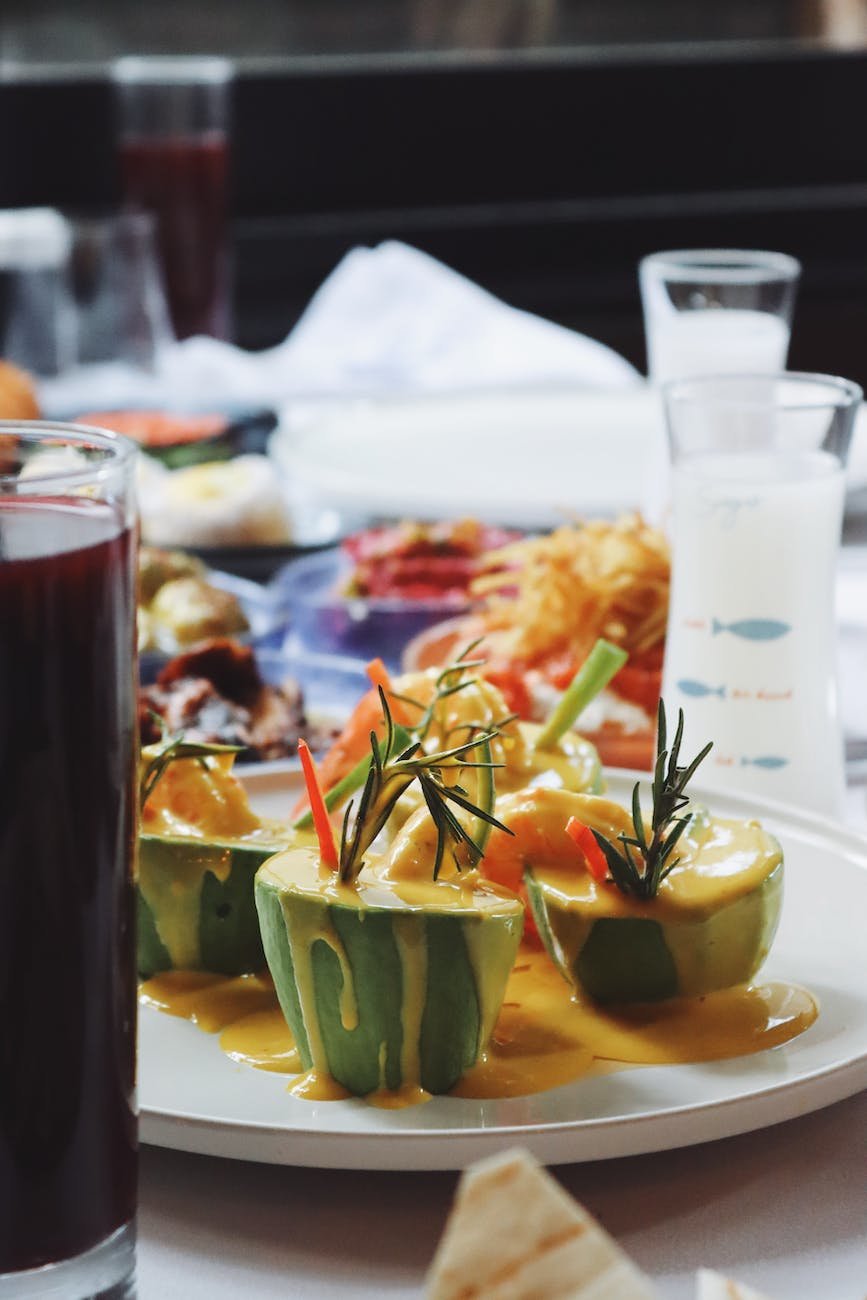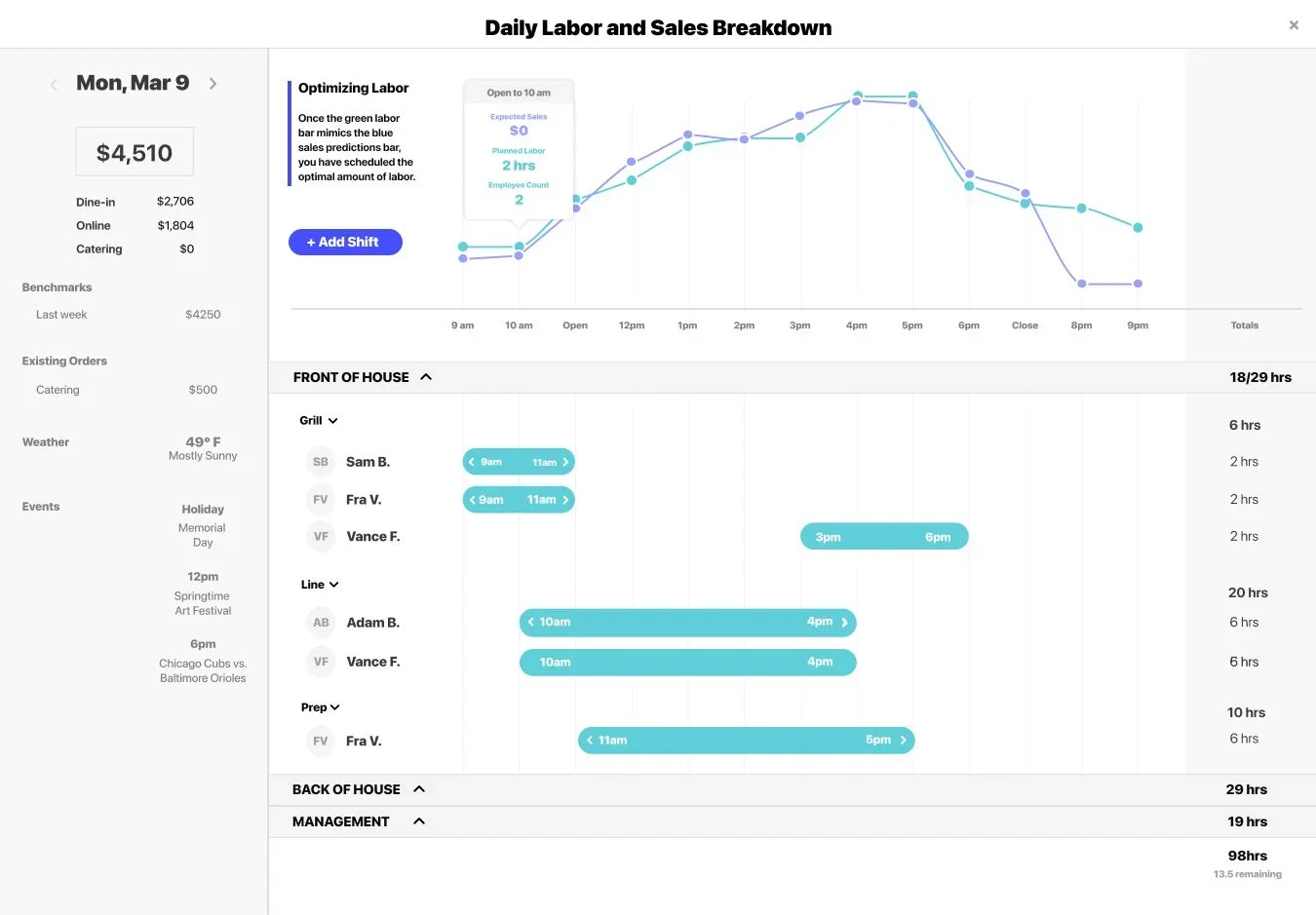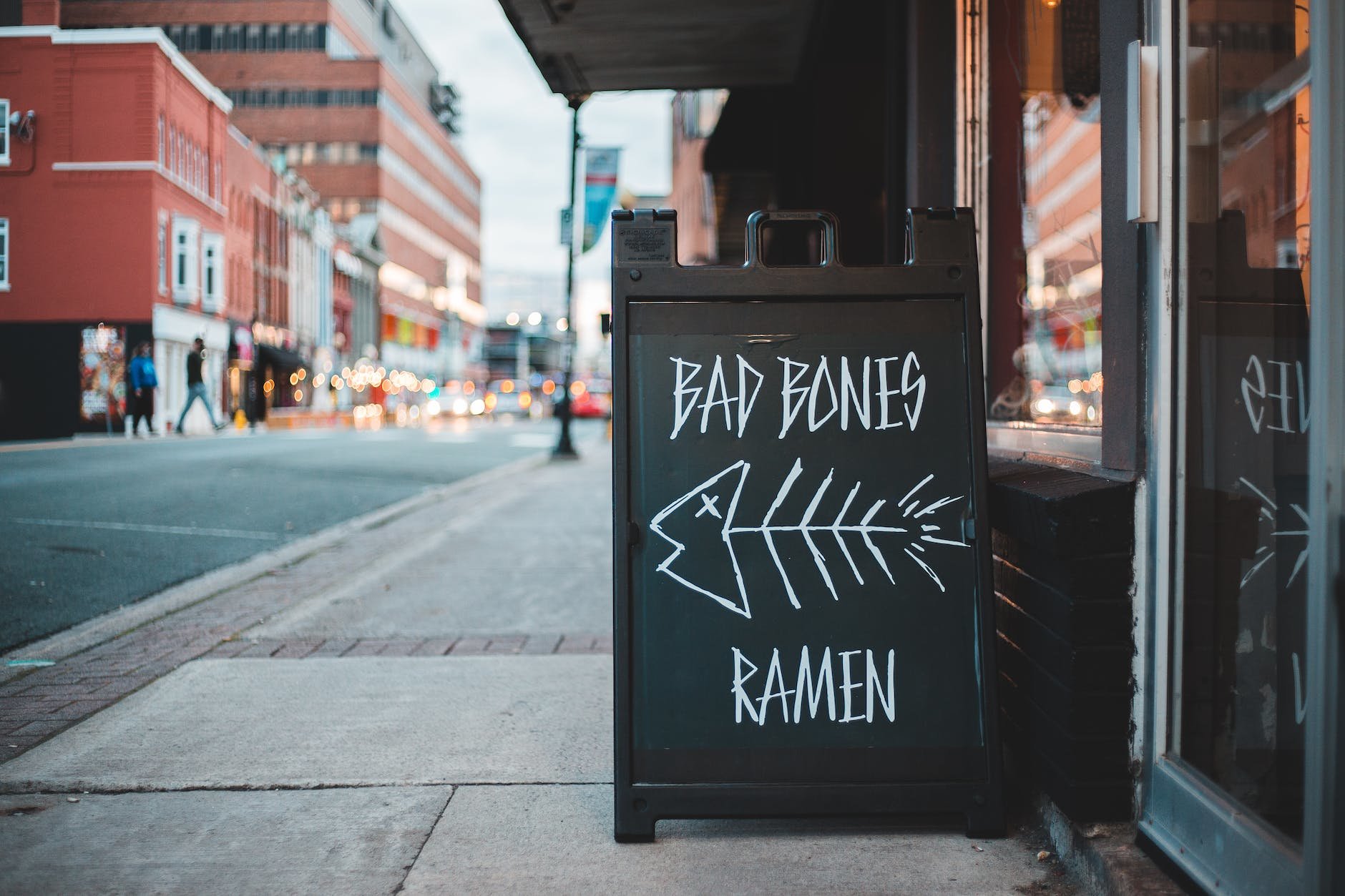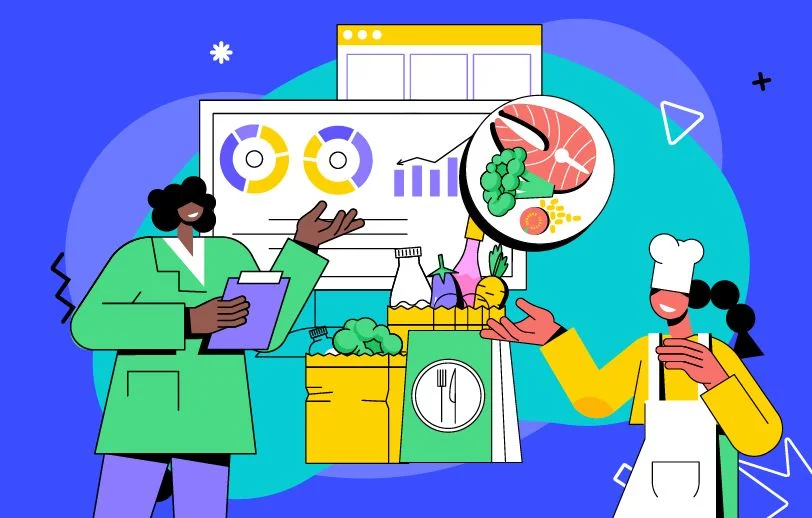Running a successful restaurant can be a challenging and rewarding experience, but it's no secret that managing costs is a constant struggle. As a restaurant owner or manager, you likely know all too well the pressures of maintaining profitability while ensuring the highest quality food and service for your customers.
According to recent statistics, food and beverage costs can account for up to 35% of a restaurant's total expenses, making it one of the most significant challenges facing the industry today. Additionally, rising food costs, supply chain disruptions, and increasing competition are only adding to the complexity of running a profitable restaurant.
Food costs in a restaurant can increase due to various factors, including external ones like ingredient prices and internal issues such as kitchen waste or employee theft. A decline in profits can be a warning sign of unmanageable food costs.
In this article, we will explore some practical tips and strategies to help you lower your food costs without sacrificing quality or customer satisfaction.
Keep in mind that they may not all apply to your business. You’ll see the best results if you focus on the primary causes for your high food costs in your restaurant.

1. Calculate your baseline food costs
Any time you’re aiming to reduce costs, the first step is calculating exactly what those costs are.
Start with your actual inventory costs. That’s pretty easy to determine; simply look at your invoices for food and supplies and calculate the amount of money you’ve spent on food in a specific period. It’s good practice to track this regularly.
Now, use your recipe costing (more on that later) to come up with your theoretical food costs. That’s how much you should have spent given the amount of food you sold and how much those ingredients cost for each dish.
Compare your theoretical and your actual food costs for a given period.
A small variance is normal. Things like inconsistent portion sizes, kitchen mistakes, and routine spoilage can make your actual costs a little higher than the theoretical costs.
However, a big variance indicates that there’s a bigger problem. You may be dealing with large amounts of spoilage due to forecasting errors, your menu might not be optimized well, or there could even be some degree of employee theft.
Another important restaurant metric to calculate is your food cost percentage. This ratio tells you what percentage of your revenue is being spent on food and beverage at your restaurant.
Calculating your food cost percentage requires you to determine the cost of goods sold (COGS) for a given period of time. You can also use your actual food costs for this, especially if you know that cost down to the individual dishes on your menu.
Your food cost percentage is your COGS divided by your total revenue. Multiply that by 100 to get a percentage.

Your actual restaurant food costs should be between 25% and 35% of your total sales.
If your food cost percentage is higher than this, it’s time to take a closer look at things like inventory management, food waste, and menu engineering to figure out why your costs are outside of the healthy range.
2. Improve your forecasting with AI
This one is big. Forecasting accurately in a restaurant is crucial to help predict inventory needs, reduce spoilage, and plan other business moves.
Good restaurant sales forecasts take into account lots of data points. You should be able to consider your sales history from your POS, your seasonality, local events that might affect foot traffic, the weather, and more to come up with the most accurate prediction of business volume and needs.
Realistically, manual forecasting isn’t practical. You rarely have the time to gather all of that information and consider each factor, so you make do with less data and more guesswork.
Modern AI-assistant forecasting tools for restaurants like Lineup.ai are a game changer in the restaurant industry. They’re cost-effective and far more accurate than manual forecasts. Plus, they can also save you money on staffing costs, reduce turnover, and make your life as a restaurant manager easier.
The most important thing about AI-assisted forecasting is that your accurate, real-time forecast gives you the insight you need to order inventory and plan specials wisely. Poor forecasting can lead to expensive mistakes.

3. Check restaurant inventory weekly
Food costs are directly related to inventory management. If you have supplies spoiling before you use them, that’s either a forecasting issue or an inventory management problem.
Be diligent about using the first in, first out (FIFO) method to rotate your stock. Keep your food supplies organized so that you can see everything, and whenever you get a new shipment, make sure that staff puts the newest items in the back so that the older items get used first.
This is especially crucial for perishable items, but do it for shelf-stable foods, too. You don’t want to find that 6-year-old can of ketchup shoved to the back of the shelf later.
You can find some good cost savings by ordering non-perishable items in bulk when they’re on sale, but it’s generally better to purchase items that spoil in smaller amounts. Don’t be tempted by a bulk discount on avocados unless you’re certain you’ll use all of them.
Finally, take inventory at least once per week. Count every single item by hand. It might be time-consuming, but doing inventory helps you avoid over-ordering and draws your attention to the things that have been sitting longer than you expected. Aim to do your count at the same time each week so that your results are consistent.
Download our free weekly restaurant inventory template.
4. Negotiate food prices with suppliers
Talk to your regular supplier about things that you use often and see if you can negotiate deals. Suppliers often offer discounts for purchasing in bulk, ordering ahead, or making repeat purchases.
Shop around. You may be able to get price matching from your current supplier, or, if they’re not cooperative, you may decide to form a new relationship with a more cost-effective company.
Consider joining a group purchasing organization for more negotiation power.
A group purchasing organization is a group of other local restaurants, usually independently owned, that combines their purchasing power to get group prices. If you’re running a small restaurant, you may be able to join with an existing group or form your own.
5. Shop from local farmers
Local farmers and farm markets are a good source of seasonal, fresh food, often at a better price than distributors.
They’re also a good selling point. Buying from local farmers is highly marketable because you’re supporting the local economy, and often serving better quality ingredients.
Another big advantage of this strategy is that you can diversify your menu for a much lower price. Farmers don’t have the same volume requirements as big distributors, and they are happy to offload their small crops or specialty items at a reasonable price.
Farmers are also generally more willing to negotiate since they don’t have to pay the supply chain costs to get food to you.
If it’s good for your customer demographics, you might consider offering a seasonal menu based on the supplies you can get from your local area. Consider logistics and labor costs before you make that decision, especially if you specialize in a simple, streamlined menu to keep costs low.

6. Stay away from convenience ingredients
Chopped vegetables, pre-butchered meats, and other prepared food items cost more per ounce than the non-prepared versions. You’re paying for the ingredient and the work that went into preparing and packaging it.
Prepared foods often spoil faster, too. For anything you need to store, it’s wiser to go with the whole food option or as close as you can get.
Instead of buying bags of chopped lettuce, buy heads of lettuce, then chop and pre-portion them as needed. Butcher your own meats. On top of saving money on food costs, you can also use this opportunity to implement portion control during preparation to cut down on cost variances.
You may find that quality improves, too, which is good for food sales. Many whole ingredients taste fresher than the prepared version.
7. Know when to get the cheaper option
Sometimes, the cheaper option is a good choice. Other times, expense is directly related to quality, and it’s not always a good idea to cut costs by buying lower quality ingredients. Do your homework to find out which of your regular supplies could be cheaper.
For example, there is a pretty substantial quality difference in the grades of beef steaks, but if you’re using that meat for stew instead of steak, the grade isn’t as important. Test a more affordable option to see if it makes a difference in the final plate.
The difference between grades of produce is often cosmetic. An ugly tomato is just as good as a pretty one if you’re going to put it in a blender to make salsa, and scarred apples still make an impressive apple pie.
Don’t cut corners where it will affect your business, but by all means, save on food costs by purchasing less expensive items where it makes sense.
8. Optimize portion sizes
In the US, it’s common for restaurants to serve ridiculously oversized portions. For some businesses, that’s a selling point, but many consumers are starting to ask for more reasonable options.
If customers regularly have food left on the plate at the end of the meal, portion sizes are too big. You may also notice that people share entrees or eat appetizers and salads instead of meals. Those are also signs that your portions are a little too generous.
Standardize portions in the kitchen to help maintain consistent costs and service. Portion control itself can cut down on food costs, and keeping your servings consistent helps manage customer expectations. Consistency is key.
Consider offering two different portion sizes for different price points if you’re concerned about suddenly dropping plate sizes on your regular customers. You can easily test the success of your strategy by seeing how many customers order the alternative size, and when you strike the right balance, you can move your menu more in that direction.
9. Get creative with daily specials
Specials are a staple of the restaurant business.
Your specials are a great way to use up food inventory that’s not moving as fast as you’d like. Even if the price point isn’t something you’d offer on your regular menu, it’s better to sell something close to cost than it is to just let it spoil without recovering any of that spend.
To move items faster, you can either discount an existing menu item or come up with new specials that use the ingredients you need to deplete. Soups, salads, and scrambles make great, cost-effective specials that can easily be adapted to use up whatever supplies you need.
Here’s a word of warning, though:
Don’t create specials that require you to order more perishable supplies, especially if those things aren’t already used on your menu. If you don’t normally use tortillas, a seafood enchilada is not a good choice to use up that extra crab meat.
Consider online ordering when you create your specials, too. If a big percentage of sales come from your website, post your daily specials where takeout customers can see them. Social media might be a help, but if you don’t already have a following, it can also just be a waste of time.

10. Get serious about reducing food waste
Food waste is an inevitable part of the restaurant industry, but we can do a lot to reduce that waste.
Use your scraps. Meat and vegetable scraps make great stock. Stale bread is a treasure trove; it can become croutons, breadcrumbs, gazpacho, bread pudding, meatloaf filler, or even French toast.
Remember earlier when we recommended working with your local farmers? Consider trading some of your food scraps with local farmers. They’ll use it for livestock feed or compost, and you might be able to get a discount on some of their product in return.
Waste isn’t always scraps. Consider donating to food banks if you have items that are nearing their best-by date and you don’t have a plan to use them. It might not give you back any of your investment, but you can claim those donations on your taxes and advertise that you support local charities.
Ask customers to get behind the reduced-waste journey, too. Encourage them to order smaller portions (if you offer that) and leave off any ingredients that they really don’t want. If you have an all-you-can-eat menu, you might charge a fee for excessive leftovers to deter wasteful ordering.
While you’re at it, take a look at your packaging. Can you use less material to pack to-go orders? That’s another place where you might save money, plus customers appreciate the eco-friendly route.
Understanding the factors that affect food costs in your restaurant
Before diving into strategies to reduce food costs, it's crucial to understand the various factors that can influence these expenses. Recognizing these factors can help you identify specific areas of your operation that need attention and can make your cost-reduction efforts more targeted and effective.
External Factors Influencing Food Costs
Market Prices
The cost of ingredients can fluctuate significantly due to changes in supply and demand, seasonal variations, and global economic conditions. For instance, a poor harvest season can drive up the prices of fruits and vegetables.
Geographical Location
Your restaurant's location can also play a significant role in food costs. Restaurants in urban areas or those that are far from agricultural centers may face higher prices due to transportation and logistics costs.
Supply Chain Dynamics
Disruptions in the supply chain, whether from natural disasters, political instability, or other factors, can lead to increased costs for certain ingredients.
Government Policies
Tariffs, subsidies, and other government actions can affect the cost of food products. For example, import duties on certain goods can make them more expensive.
Internal factors affecting food costs
Menu Design
The ingredients you choose for your menu items can have a big impact on costs. Opting for local, seasonal ingredients over imported or out-of-season items can help reduce expenses.
Waste Management
How your restaurant manages food waste can significantly affect your bottom line. Poor inventory management, over-preparing food, and large portion sizes can lead to unnecessary waste.
Portion Control
Serving consistent portions not only helps in managing customer expectations but also in controlling food costs. Over-portioning can lead to both increased costs and waste.
Procurement Practices
The way you purchase ingredients, whether through direct relationships with suppliers or through a purchasing group, can impact your costs. Negotiating better prices or terms can lead to significant savings.
By addressing these factors, you can better manage your food costs, improve your restaurant's profitability, and continue to provide quality service to your customers.
One final tip for restaurateurs
In your restaurant operations, your overhead costs are often tied together. While you’re looking for food cost control strategies, you’re likely to spot opportunities to reduce labor costs, increase your margins, and leverage marketing to get more customers in the door.
Go for it!
Anything you can do to increase your restaurant profit and decrease costs will help you survive in this hyper-competitive market.
Further read:

The team at Lineup.ai is composed of seasoned professionals who hold deep insights into the unique challenges and pain points of the restaurant industry, and are equally skilled in artificial intelligence, machine learning, and data analytics. This fusion of expertise enables Lineup.ai to create cutting-edge AI solutions specifically tailored for the restaurant sector. The technical and analytical prowess of the team, combined with a deep understanding of the unique challenges faced by restaurants, forms the cornerstone of the company's innovation. The team at Lineup.ai also excels in communicating the benefits and applications of AI and machine learning to businesses, ensuring clients fully leverage the capabilities of these solutions.
More about the author